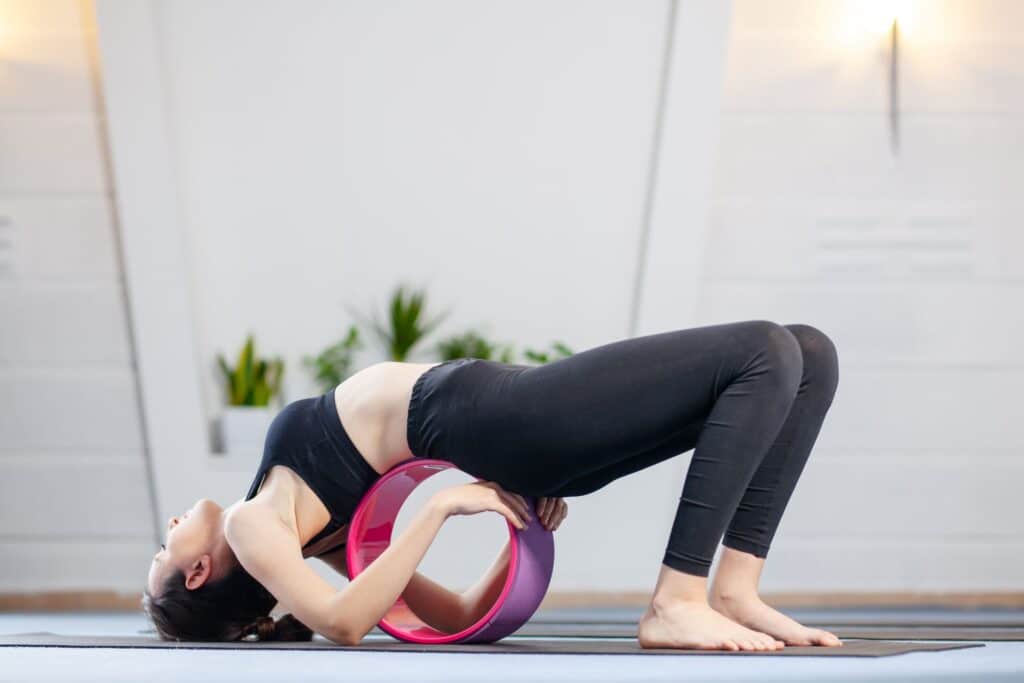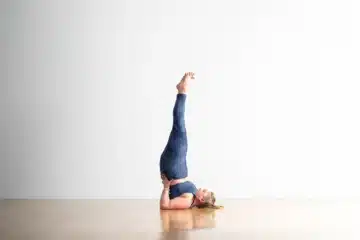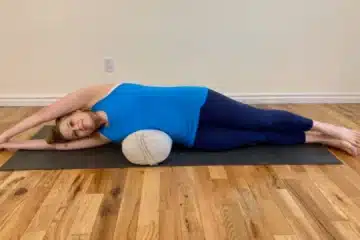Yoga offers a multitude of benefits for relieving back pain, but sometimes certain poses can be challenging to perform, especially for those dealing with discomfort or limited flexibility.
Fortunately, the strategic use of yoga props can provide essential support and assistance, allowing practitioners to experience the therapeutic benefits of yoga while minimizing strain on the back.
In this article, we’ll explore various yoga props that can be used to support back pain poses, enhancing comfort, stability, and alignment for a safer and more enjoyable practice.
Understanding the Importance of Yoga Props
Yoga props are valuable tools that help practitioners of all levels deepen their practice, improve alignment, and prevent injury.
When it comes to supporting back pain poses, props play a crucial role in reducing strain on the spine, promoting relaxation, and allowing individuals to hold poses for longer periods comfortably.
By providing additional support and stability, props enable practitioners to access the therapeutic benefits of yoga while minimizing discomfort and maximizing the effectiveness of each posture.
Essential Yoga Props for Supporting Back Pain Poses
- Yoga Blocks: Yoga blocks are versatile props that can be used to modify poses and provide support for individuals with limited flexibility or range of motion. When supporting back pain poses, yoga blocks can be placed under the hands, forearms, or sit bones to elevate the body and reduce strain on the spine. For example, in poses like Supported Bridge or Supported Fish Pose, placing a block under the sacrum can provide additional support and allow for a deeper release in the back muscles.
- Yoga Straps: Yoga straps are excellent tools for increasing flexibility and facilitating proper alignment in yoga poses. When supporting back pain poses, straps can be used to extend reach and provide assistance in reaching for the feet or binding the hands behind the back. For instance, in Seated Forward Fold or Cow Face Pose, using a strap can help individuals with tight hamstrings or shoulders maintain proper alignment and avoid rounding the spine, reducing the risk of strain or injury.
- Yoga Bolsters: Yoga bolsters are large, cylindrical cushions that provide firm yet comfortable support for the body in restorative and gentle yoga poses. When supporting back pain poses, bolsters can be placed under the knees, hips, or back to alleviate pressure on the spine and promote relaxation. In poses like Supported Child’s Pose or Reclining Bound Angle Pose, using a bolster can provide gentle traction and help release tension in the back and hips, allowing for deeper relaxation and stress relief.
- Yoga Blankets: Yoga blankets are soft, supportive props that can be folded or rolled to provide cushioning and support in various yoga poses. When supporting back pain poses, blankets can be used to pad hard surfaces, provide additional height in seated poses, or create gentle traction in supine poses. For example, in Supine Twist or Legs Up the Wall Pose, placing a folded blanket under the knees can reduce strain on the lower back and promote proper alignment, enhancing comfort and relaxation.
- Yoga Chairs: Yoga chairs are specialized props designed to support the body in seated and standing poses, making yoga accessible to individuals with mobility issues or limitations. When supporting back pain poses, chairs can be used to provide stability and support in standing forward folds, seated twists, or gentle backbends. For instance, in Chair Pose or Supported Standing Forward Fold, using a chair can help individuals maintain proper alignment and engage the muscles of the legs and core, reducing strain on the back.
Incorporating Yoga Props into Your Practice
When using yoga props to support back pain poses, it’s essential to approach with mindfulness and awareness of your body’s needs and limitations. Here are some tips for incorporating yoga props into your practice effectively:
- Start with the Basics: Begin by familiarizing yourself with the essential yoga props mentioned above: blocks, straps, bolsters, blankets, and chairs. Experiment with different props to discover which ones best support your body and enhance your practice.
- Listen to Your Body: Pay attention to how your body feels in each pose and adjust the props accordingly to find the right level of support and comfort. Avoid pushing yourself into discomfort or strain, and honor your body’s limitations by using props to modify poses as needed.
- Seek Guidance: If you’re new to using yoga props or dealing with specific back pain issues, consider seeking guidance from a qualified yoga instructor or physical therapist who can offer personalized recommendations and modifications tailored to your needs.
- Be Creative: Don’t be afraid to get creative with your use of yoga props! Experiment with different props and configurations to find unique ways to support back pain poses and enhance your practice. Remember that there’s no one-size-fits-all approach, so feel free to adapt and modify as needed to suit your body and preferences.
Sample Yoga Sequence Using Props for Back Pain Relief
Here’s a sample yoga sequence incorporating props for supporting back pain poses:
- Supported Child’s Pose:
- Place a bolster lengthwise on your mat and kneel in front of it.
- Fold forward, draping your torso over the bolster and resting your forehead on the support.
- Extend your arms forward or alongside your body, palms facing up.
- Hold for 5-10 breaths, feeling a gentle stretch in the lower back and hips.
- Seated Forward Fold with Strap:
- Sit on the floor with legs extended in front of you and a strap nearby.
- Place the strap around the soles of your feet and hold onto the ends with both hands.
- Inhale to lengthen the spine, then exhale as you hinge forward from the hips, keeping the back flat.
- Hold onto the strap wherever you feel a comfortable stretch, avoiding rounding the spine.
- Hold for 5-10 breaths, then slowly release and come back to a seated position.
- Supported Bridge Pose with Block:
- Lie on your back with knees bent and feet hip-width apart, arms by your sides.
- Place a block under your sacrum (the flat bone at the base of your spine) on its lowest height setting.
- Press into your feet and lift your hips towards the ceiling, engaging your glutes and thighs.
- Rest your arms by your sides or extend them overhead, palms facing up.
- Hold for 5-10 breaths, then gently release and lower back down.
- Supine Twist with Blanket:
- Lie on your back with knees bent and feet hip-width apart, arms extended to the sides.
- Place a folded blanket under your knees for support.
- Inhale to lengthen the spine, then exhale as you gently lower both knees to the right side.
- Turn your head to the left and extend your left arm out to the side, palm facing up.
- Hold for 5-10 breaths, then inhale to come back to center and repeat on the opposite side.
Conclusion
Yoga props are valuable tools for supporting back pain poses, enhancing comfort, stability, and alignment for a safer and more effective practice.
By incorporating props such as blocks, straps, bolsters, blankets, and chairs into your yoga practice, you can alleviate strain on the spine, promote relaxation, and experience the therapeutic benefits of yoga with greater ease and accessibility.
Whether you’re dealing with chronic back pain or simply looking to deepen your practice, yoga props offer endless possibilities for support and transformation on your journey to wellness.



